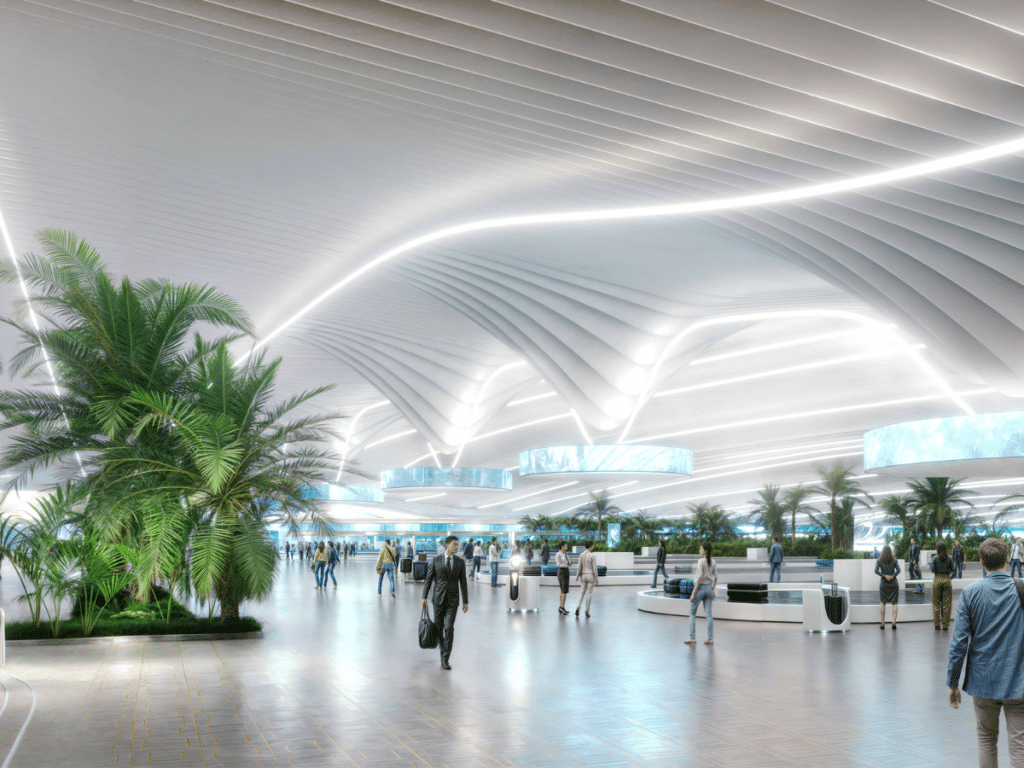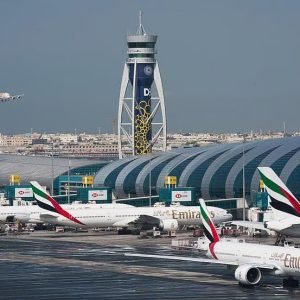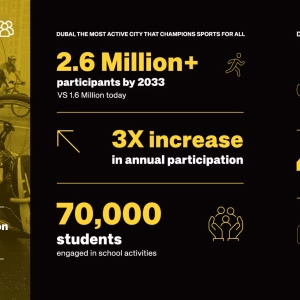Dubai is preparing for one of the most significant shifts in aviation history. Dubai International Airport (DXB), currently the world’s busiest international hub, is set to transfer all operations to Al Maktoum International Airport (DWC) by 2032. This move will not only change how people travel through Dubai but will also make Al Maktoum the largest airport in the world in terms of passenger capacity.
Why the Move Is Happening
DXB has long been a symbol of Dubai’s growth and ambition. With passenger numbers projected to reach over 114 million by 2031, the airport is nearing its maximum capacity. Dubai Airports has confirmed that the solution to this challenge lies in Al Maktoum International Airport, located in Dubai South.
The transition is expected to be the largest of its kind in the world. Dubai Airports CEO Paul Griffiths explained that once DXB reaches its limit, operations will gradually begin to move to DWC.

He said that within a few years, DXB would cross the 100 million passenger mark, and by 2032, all services will operate from DWC. This transition is not just about relocating flights; it is about integrating advanced technologies on a large scale to ensure a seamless passenger experience.
The Vision for Al Maktoum International Airport
Al Maktoum International Airport is part of a massive development plan that will see it become the world’s largest airport. The project, valued at Dhs128 billion, will ultimately allow the airport to accommodate up to 260 million passengers annually.

The airport is being built in phases. Airlines will move gradually, taking slots at DWC as they become available, ensuring a smooth transition. Griffiths emphasized that even as the airport grows to handle hundreds of millions of passengers, the aim is to make every traveler feel special and valued.
While the full project is expected to be completed by 2057, the first major milestone of transferring all DXB services in 2032 will mark a historic moment in global aviation.

What Will Happen to Dubai International Airport
Many are curious about the future of DXB once all operations move to DWC. Griffiths explained that maintaining two massive airports so close to each other, only 70 kilometers apart, would not make economic sense.
By 2032, most of DXB’s infrastructure will be nearing the end of its useful life. Keeping it operational would require significant investment, which may not be practical. There is speculation that the DXB site could be redeveloped by developers, although no official plan has been confirmed.
Relocating the airport to Dubai South is also expected to positively impact traffic and urban development, easing congestion in the city and opening new opportunities for growth in surrounding areas.
The Timeline for the Transition
The move from DXB to DWC will happen in carefully planned stages. Key milestones include:
Between 2025 and 2030, Dubai Airports will trial new technologies and infrastructure at DWC.
In 2032, all passenger and airline services will officially transfer to DWC.
Between 2032 and 2057, DWC will continue to expand to reach a capacity of 260 million passengers annually.
The phased approach ensures that airlines and passengers can adjust smoothly while maintaining operational efficiency and safety.
Benefits of the Move
Increased Capacity
Al Maktoum International Airport will surpass DXB in both size and passenger handling. This will provide more space, reduce congestion, and allow for smoother operations as travel demand continues to grow.
Advanced Technology
DWC will integrate modern technologies, including automated check-ins, advanced security systems, and smart airport solutions. These innovations aim to create a seamless and stress-free travel experience for all passengers.
Urban Development
Shifting the airport to Dubai South will ease traffic around the city and encourage urban expansion. This aligns with Dubai’s long-term vision of spreading development across the emirate while reducing pressure on central areas.
Future-Proofing Aviation
With a long-term plan to accommodate up to 260 million passengers, DWC positions Dubai to meet future aviation demands. This ensures that the city remains a global hub for air travel and trade.
Challenges Ahead
The transition will not be without challenges. Phasing airlines from DXB to DWC will require careful coordination. Transport links, staff training, and infrastructure must be scaled efficiently to handle the growing passenger flow.
Repurposing or redeveloping DXB is another significant challenge. Decisions must balance financial feasibility with the potential benefits of new developments on the site.

What Travelers Can Expect
Passengers can look forward to a more modern, efficient, and comfortable travel experience at DWC. Even as the airport scales to handle hundreds of millions of passengers, the focus will be on creating an intimate and welcoming atmosphere.
Griffiths highlighted that every traveler should feel valued, and the airport will combine size with a personal touch to ensure that the journey begins on a positive note.
A Historic Moment in Aviation
The transition from DXB to Al Maktoum International Airport represents more than a simple relocation of flights. It is a bold step toward the future of aviation, combining capacity, technology, and urban planning to redefine global travel standards.
As DWC prepares to become the world’s largest airport, Dubai solidifies its position as a global aviation leader. The move will enhance passenger experience, support city growth, and future-proof the emirate’s transport infrastructure. Travelers and aviation enthusiasts around the world will be watching as Dubai sets a new benchmark for airport innovation and efficiency.
Do follow UAE Stories on Instagram
Read Next – Dubai Shines Light on $2tn Space-Based Solar Power Market














